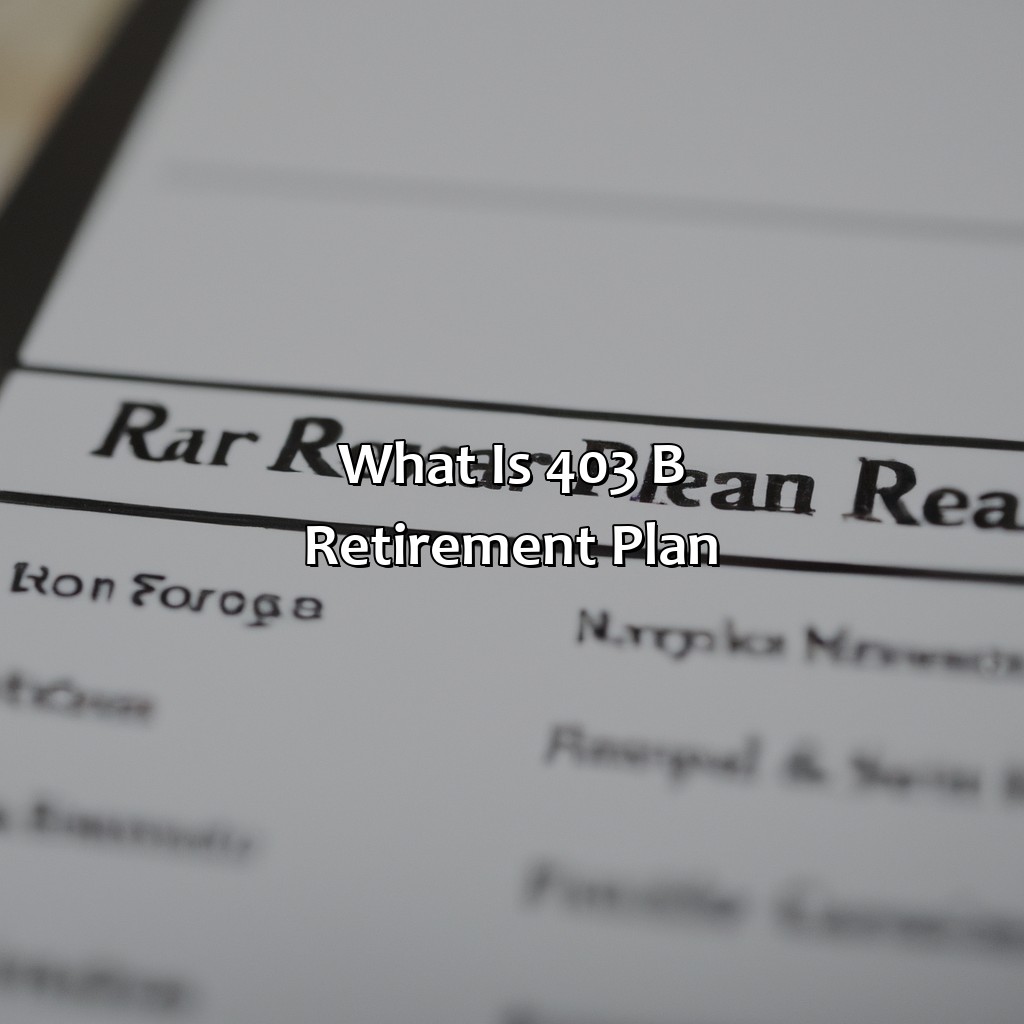What Is 403 B Retirement Plan?
Key Takeaway:
- 403(b) retirement plans are tax-advantaged retirement savings plans designed for employees of public schools, colleges, universities, churches, and certain non-profit organizations. These plans offer similar benefits as 401(k) plans, but with some differences in eligibility and contribution limits.
- To be eligible for a 403(b) retirement plan, employees must work for a qualified employer and meet certain age and service requirements. Employers may also have additional eligibility criteria, such as minimum hours worked per week or month.
- Contributions to a 403(b) retirement plan may be made on a pre-tax or after-tax basis, depending on the employer plan. Employees may contribute up to a certain percentage of their income or a maximum dollar amount each year, as determined by the IRS. Employers may also make contributions to the plan on behalf of their employees.
Are you confused about the options for your retirement savings? Don’t worry, a 403 b retirement plan is an easy and secure way to save for the future. You’ll get the information you need to begin planning here.
Understanding 403(b) Retirement Plan
The 403(b) plan is a retirement plan for employees of non-profit organizations, religious institutions, and public schools. Contributions to this plan are made on a pre-tax basis, allowing for tax-deferred growth over time. Additionally, the plan allows for catch-up contributions for those over 50 years old and offers a variety of investment options such as mutual funds and annuities.
It’s important to note that while the 403(b) plan is similar to a 401(k) plan, there are some key differences in terms of contribution limits and eligibility requirements. For example, some employers may have a mandatory waiting period before employees can participate in the plan.
To maximize the benefits of a 403(b) plan, it’s recommended that individuals regularly review and adjust their investment allocations to ensure they align with their financial goals. Additionally, taking advantage of any employer matching contributions can greatly increase the amount of retirement savings.
Overall, the 403(b) plan can be an effective tool for building a retirement nest egg for employees of non-profit organizations, religious institutions, and public schools. By understanding the unique aspects and benefits of the plan, individuals can make informed decisions and take steps towards a secure financial future.
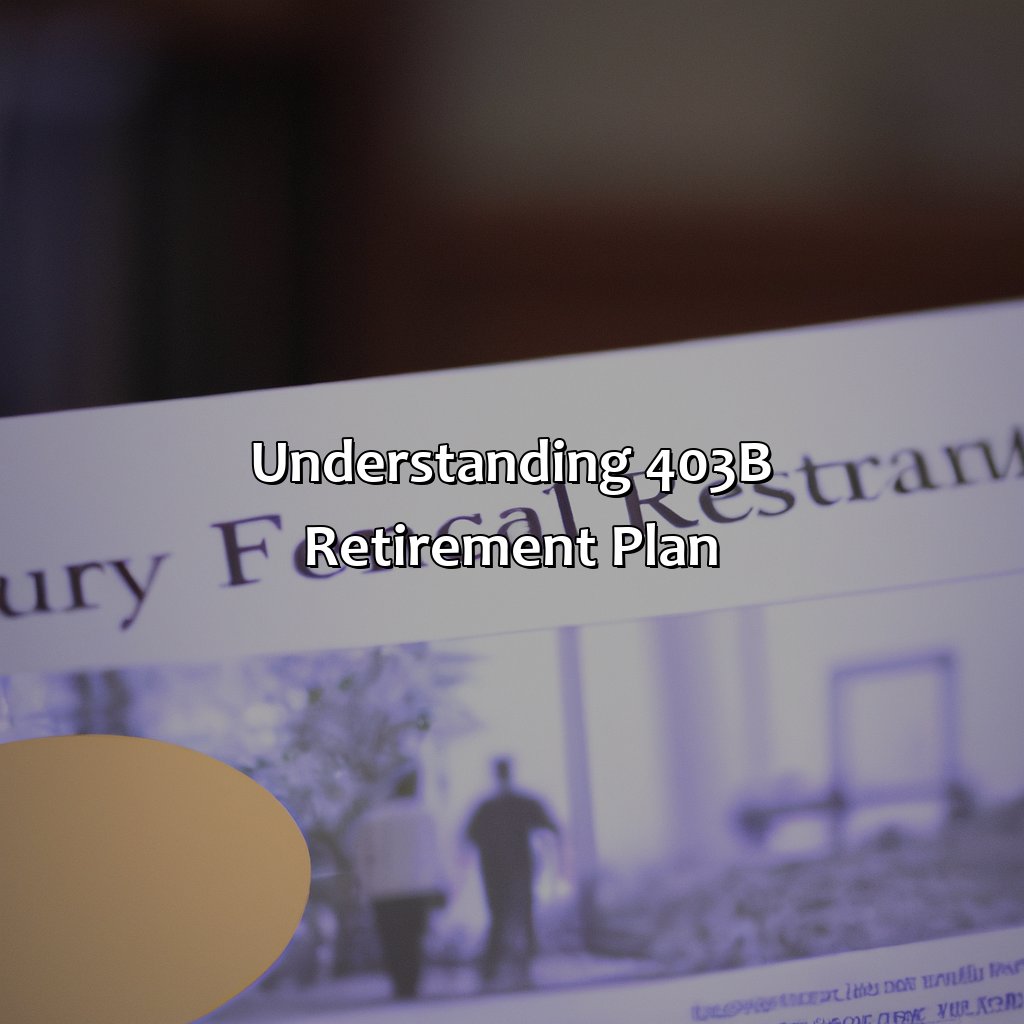
Image credits: retiregenz.com by Harry Jones
Eligibility Criteria for 403(b) Retirement Plan
To be eligible for a 403(b) retirement plan, an employee must work for a non-profit organization, school, or religious institution that offers the plan. They may also be eligible if they work for a cooperative hospital service organization or a self-employed minister. The employee must also work at least 20 hours per week or have a contract for at least 1,000 hours of service per year. Additionally, the employee must not be eligible for another qualified retirement plan, such as a 401(k) or 457(b) plan.
It is important to note that there are contribution limits, catch-up contributions, and distribution rules that must be followed in a 403(b) plan.
A unique detail to consider is that some employees may be eligible for both a 403(b) plan and another qualified plan, but the contribution limits for both plans cannot be exceeded in total. According to the IRS, the maximum contribution limit for 403(b) plans in 2021 is $19,500, with an additional catch-up contribution limit of $6,500 for those 50 years of age or older.
(Source: IRS.gov)
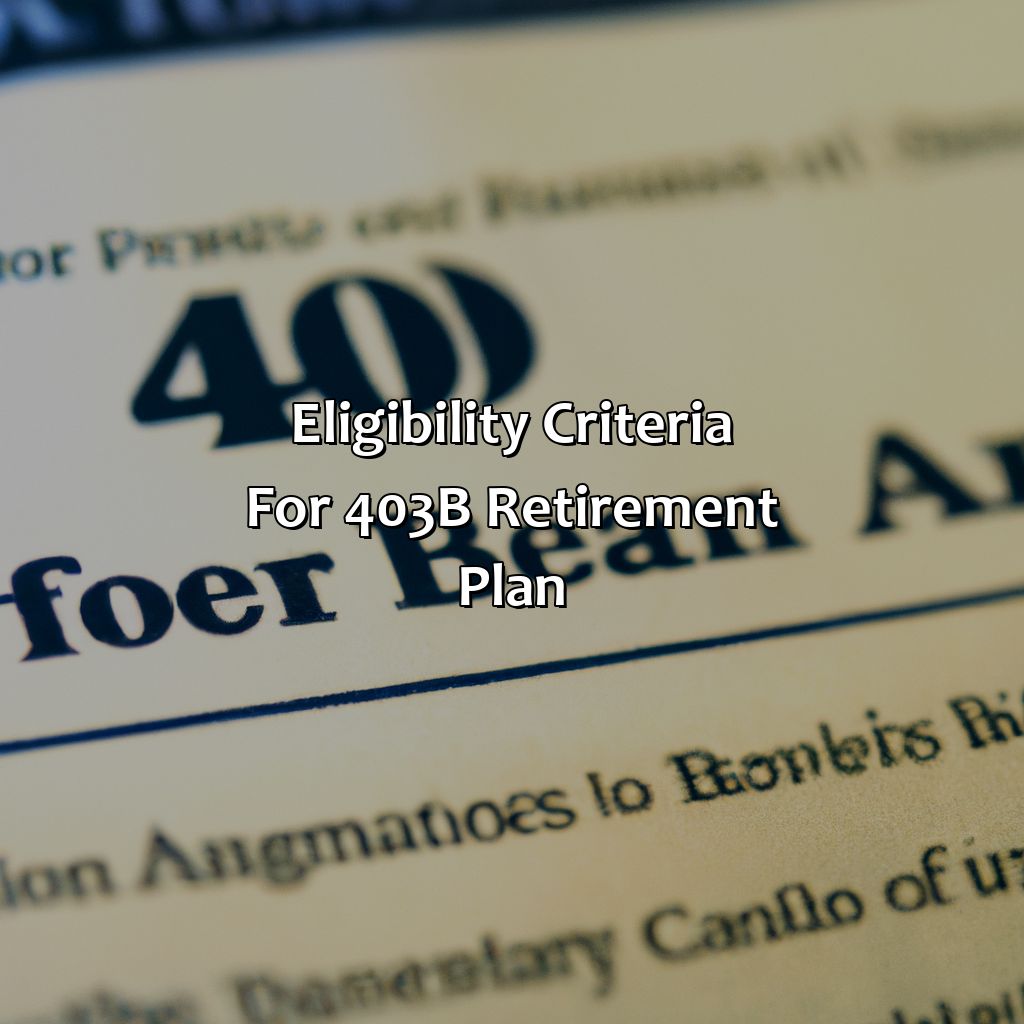
Image credits: retiregenz.com by David Duncun
Contributions to 403(b) Retirement Plan
Contributions to the 403(b) Retirement Plan involve depositing money into the retirement account. Employers can contribute to their employees’ accounts, and employees can also make contributions. The amount an employee can contribute depends on their income and age. The contributions are tax-deferred, so taxes are not paid until the funds are withdrawn during retirement. Most employers allow their employees to choose how the contributions are invested, usually in mutual funds or annuities.
It is important to consider the maximum contribution limit allowed by the IRS, as well as any employer matching contributions. It is also recommended to regularly review and adjust the investment portfolio based on personal financial goals and market conditions.
One unique feature of the 403(b) Retirement Plan is the catch-up provision, allowing individuals aged 50 and older to make additional contributions beyond the standard limit. It is also possible to take out loans against the account balance in certain circumstances, but this should be carefully considered as it may reduce the overall retirement savings.
To maximize the benefits of the 403(b) Retirement Plan, individuals should contribute as much as possible and regularly review and adjust the investment portfolio based on personal circumstances. Employers should also offer education and resources to help employees make informed decisions about their retirement savings.

Image credits: retiregenz.com by Adam Washington
Investment Options in 403(b) Retirement Plan
Investing in a 403(b) retirement plan offers several investment options to fund your retirement years. Consider diversifying your investment portfolio to include mutual funds, annuities, and ETFs.
To make an informed decision, the Investment Options in 403(b) Retirement Plan table lists the available options, fees, minimum investment requirements, and other relevant details. For instance, the table indicates that Fidelity Investment mutual funds have a 0.35% expense ratio and a minimum investment of $2,500.
It is crucial to know that some plan sponsors do not offer the same investment options. Thus, seek professional advice to help you determine the best investments.
Notably, in recent years, the 403(b) investment sector has seen an influx of fee-only financial advisors, providing more investment advice options to plan beneficiaries.
Did you know that 403(b) plans were first introduced back in 1958 to offer tax incentives for nonprofit organizations? Today, nonprofit organizations, schools, and government entities can still sponsor this option.
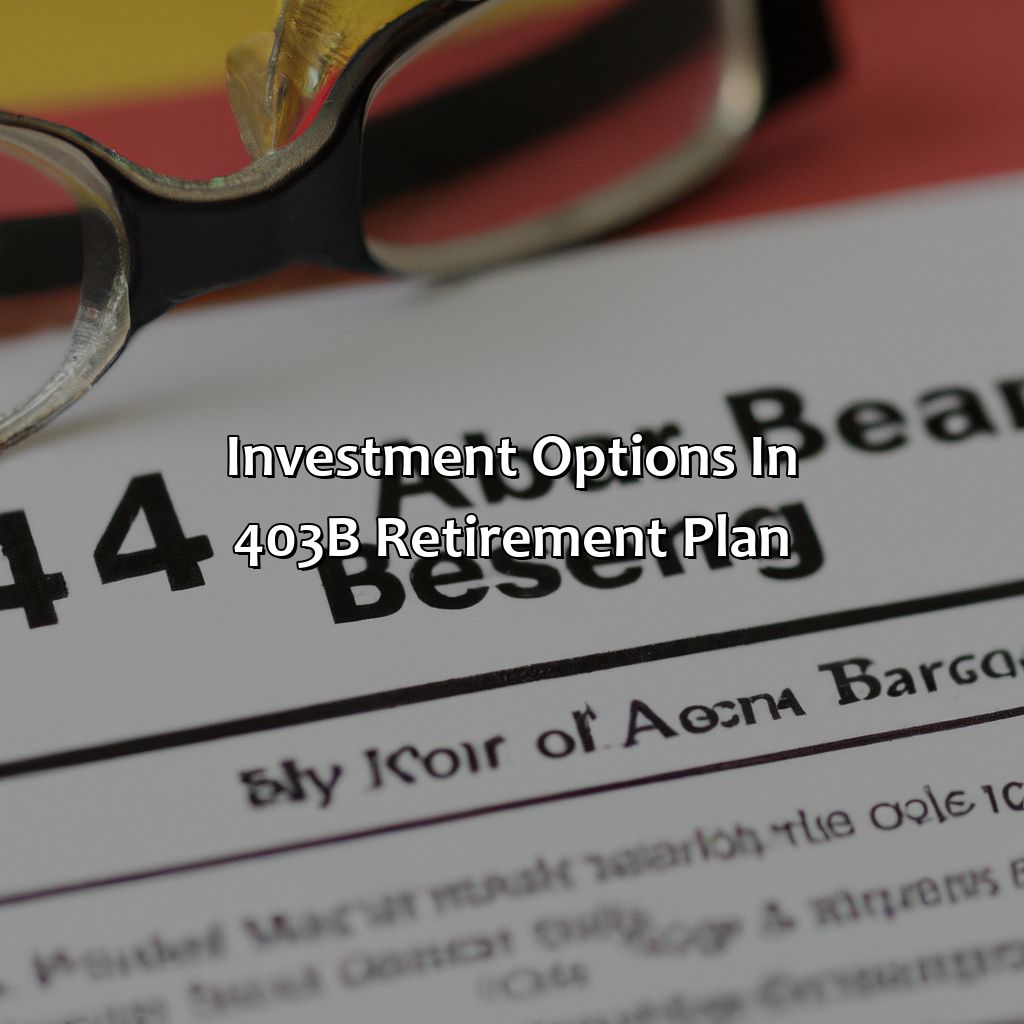
Image credits: retiregenz.com by Joel Duncun
Withdrawals from 403(b) Retirement Plan
Withdrawing from a 403(b) plan refers to taking money out of the account before retirement. The earliest age one can withdraw without penalty is 59.5 years old. Different types of withdrawals from a 403(b) plan include hardship distributions, loans, and required minimum distributions (RMDs). Hardship distributions are only allowed for certain reasons, such as paying for medical expenses or avoiding eviction. Loans from a 403(b) plan involve borrowing money from the account and then paying it back with interest. RMDs are a mandatory withdrawal that begins at age 72 and is based on life expectancy.
To make the most out of a 403(b) plan, it is recommended to avoid taking out money before retirement as it can lead to penalties and taxes. Instead, plan ahead and take advantage of employer matching contributions, as well as increase contributions to the plan. Being aware of the different types of withdrawals and their consequences can help one make informed decisions regarding their retirement savings plan.
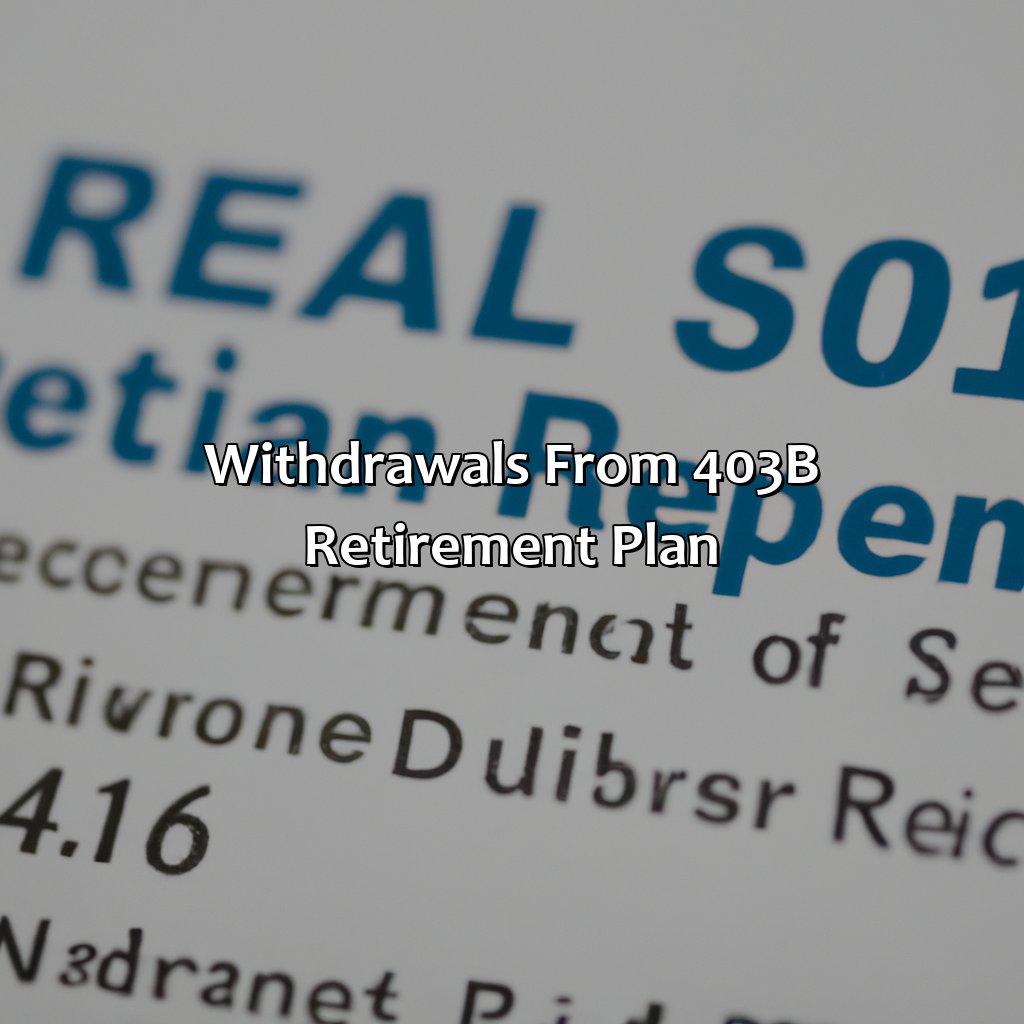
Image credits: retiregenz.com by James Arnold
Taxes on 403(b) Retirement Plan
The Implications of Taxation on 403(b) Retirement Savings
Contributions made to a 403(b) retirement plan are tax-deferred, meaning they are made before taxes are taken out of the paycheck. Thus, the taxable income for the employee is reduced, which consequently reduces their tax liability. However, once the funds are withdrawn, they are subject to income tax.
It is noteworthy that if the employee waits until retirement to withdraw the funds, they may be eligible for a lower tax rate because their income level may have decreased. Additionally, contributions made to the plan using after-tax dollars may be withdrawn tax-free.
Moreover, it is important to mention that if the employee withdraws funds from the plan before they attain the age of 59.5, they will be subjected to an early withdrawal penalty of 10% in addition to the income tax on the withdrawal.
In fact, according to the Internal Revenue Service (IRS), “Before you can take your money out of your retirement savings, you need to understand these distribution basics and tax consequences to avoid penalties and taxes that can significantly reduce your retirement savings.”
Thus, it is recommended that employees educate themselves on the tax implications of their 403(b) retirement plan, to avoid any unforeseen taxes and penalties.
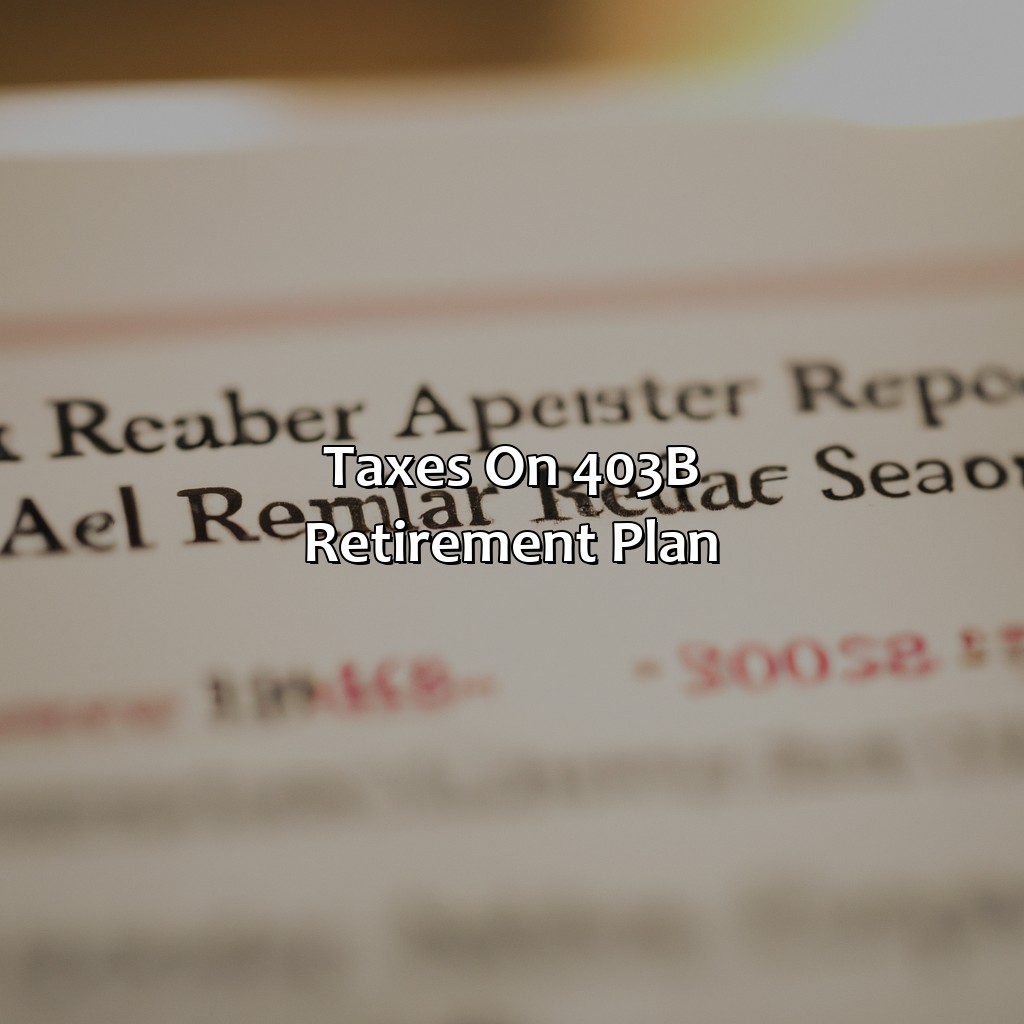
Image credits: retiregenz.com by David Woodhock
Advantages of 403(b) Retirement Plan
In today’s economy, one must be sure to choose the right retirement plan to secure a comfortable future. A 403(b) plan is one such option for employees of certain nonprofits, public schools and religious organizations. It offers unique advantages that make it an attractive option for many.
Advantages of 403(b) Retirement Plan:
- Tax advantages: Contributions to the plan are tax-deductible and allow for tax-deferred growth until withdrawal at retirement age.
- Generous employer contributions: Some employers offer a matching program for contributions, helping to build a retirement nest egg faster.
- Flexibility in investment options: Participants can choose a variety of investment options, including mutual funds, stocks, and bonds.
Furthermore, a 403(b) plan can also offer a unique benefit known as the “catch-up contribution,” which can help those near retirement age to increase their contributions beyond the usual limits.
Pro Tip: It may be worthwhile to consult with a financial advisor to help maximize the benefits of a 403(b) plan and ensure a comfortable future.
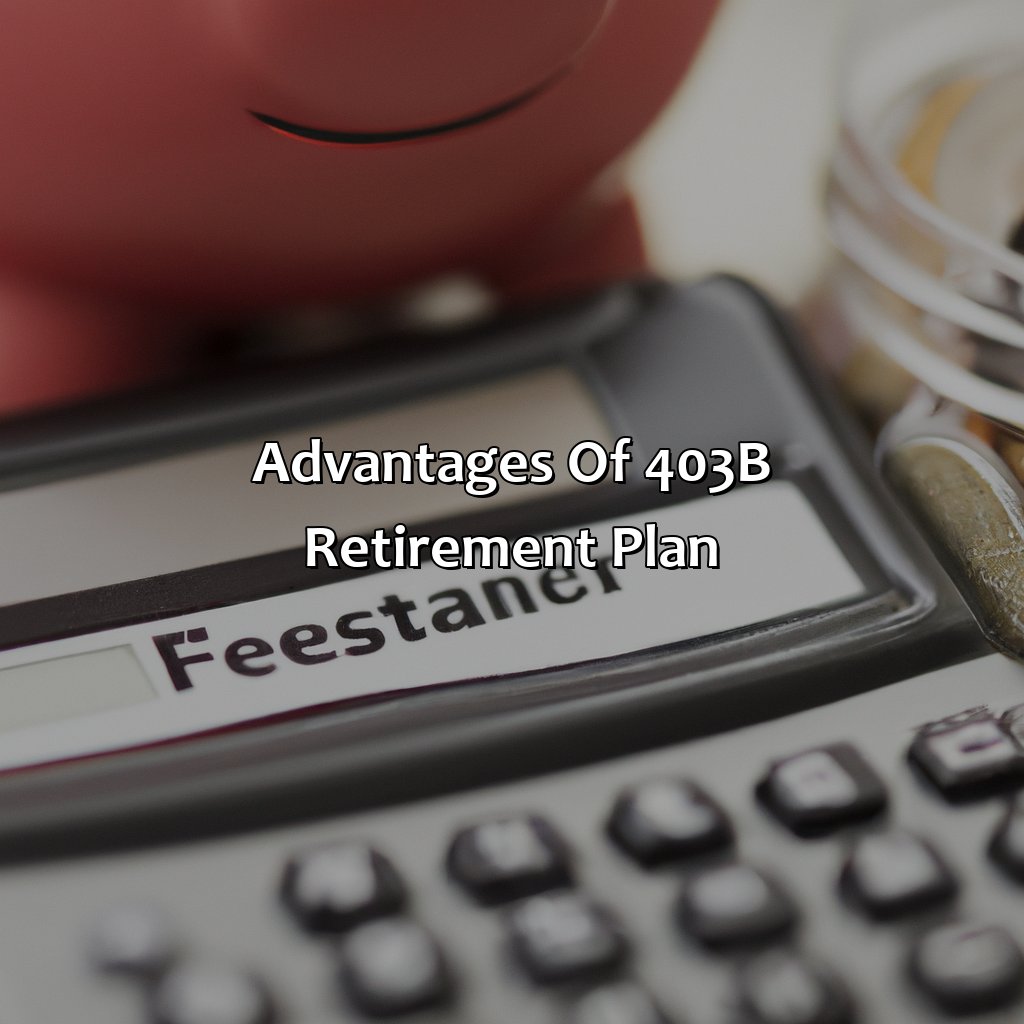
Image credits: retiregenz.com by Adam Duncun
Disadvantages of 403(b) Retirement Plan.
In this section, we will explore some potential downsides to a 403(b) retirement plan, a tax-advantaged account available to certain employees of non-profit organizations, public schools, and other tax-exempt organizations.
- Limitations on investment options: Unlike a traditional IRA or 401(k), 403(b) plans can limit investment options to specific mutual funds or annuities, limiting the ability to diversify and potentially increasing fees and expenses.
- Higher fees and expenses: Some 403(b) plans may have higher fees and expenses than other types of retirement accounts, potentially eroding the value of your savings over time.
- Less flexibility for early withdrawals: Distributions from a 403(b) plan may be subject to a 10% penalty if taken prior to age 59 ½, and you may also face higher taxes on early withdrawals.
- Complex rules and regulations: 403(b) plans can have complex rules related to contribution limits, eligibility, and withdrawal requirements, making it important to stay informed and seek advice from a financial professional.
It is worth noting that many of these downsides can be mitigated or avoided by careful planning and management of your 403(b) account.
A Pro Tip for those considering a 403(b) plan is to carefully review the investment options and fees associated with the plan, and to seek the advice of a financial professional to ensure that it is a good fit for your individual financial goals and needs.
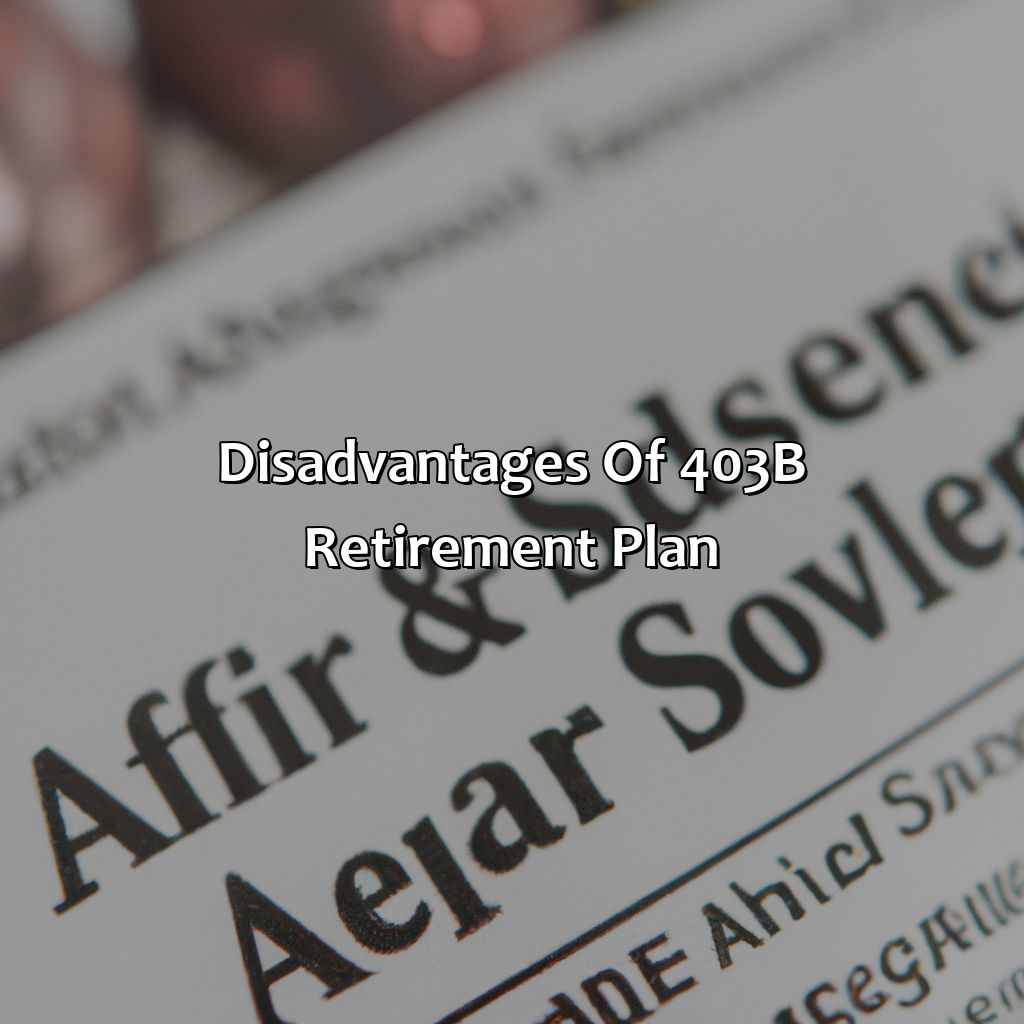
Image credits: retiregenz.com by Adam Arnold
Some Facts About 403(b) Retirement Plan:
403(b) retirement plan is a tax-deferred retirement savings plan for employees of qualifying organizations, such as public schools and non-profit organizations. (Source: Investopedia)
Contributions to a 403(b) plan can be made on a pre-tax or after-tax basis, depending on the plan. (Source: IRS)
Employers may offer matching contributions to a 403(b) plan, up to a certain percentage of the employee’s salary. (Source: The Balance)
Withdrawals from a 403(b) plan before age 59 1/2 may incur a 10% penalty, in addition to income taxes. (Source: Fidelity)
Employees may be eligible for catch-up contributions to their 403(b) plan if they are over age 50 and have been contributing to the plan for a certain number of years. (Source: TIAA)
FAQs about What Is 403 B Retirement Plan?
What is a 403(b) retirement plan?
A 403(b) retirement plan is a type of tax-advantaged retirement savings plan that is available to employees of schools, colleges, universities, and certain non-profit organizations. The 403(b) plan allows employees to save for retirement by contributing a portion of their pre-tax income to the plan.
Who is eligible for a 403(b) retirement plan?
Employees of schools, colleges, universities, and certain non-profit organizations are typically eligible for a 403(b) retirement plan. Employers must offer the plan to all eligible employees and cannot discriminate in favor of highly compensated employees.
How does a 403(b) retirement plan work?
Employees contribute a portion of their pre-tax income to the 403(b) plan and choose how the money is invested. The contributions and any earnings grow tax-free until they are withdrawn in retirement. Some employers also make contributions to the plan on behalf of their employees.
What are the contribution limits for a 403(b) retirement plan?
For 2021, employees can contribute up to $19,500 to a 403(b) plan. Employees age 50 and older can also make catch-up contributions of up to $6,500. Employers may also make contributions, up to a total limit of $58,000.
What are the withdrawal rules for a 403(b) retirement plan?
Withdrawals from a 403(b) plan are generally not allowed until the employee reaches age 59 ½. Withdrawals before that age may be subject to a 10% penalty. Once an employee reaches age 72, they are required to take minimum distributions from the plan each year.
What happens to a 403(b) retirement plan if an employee leaves their job?
The employee typically has several options when leaving their job, including leaving their money in the 403(b) plan, transferring the money to a new employer’s retirement plan, or rolling the money over into an individual retirement account (IRA).
 Checkout this IRS Loophole
Checkout this IRS Loophole 
